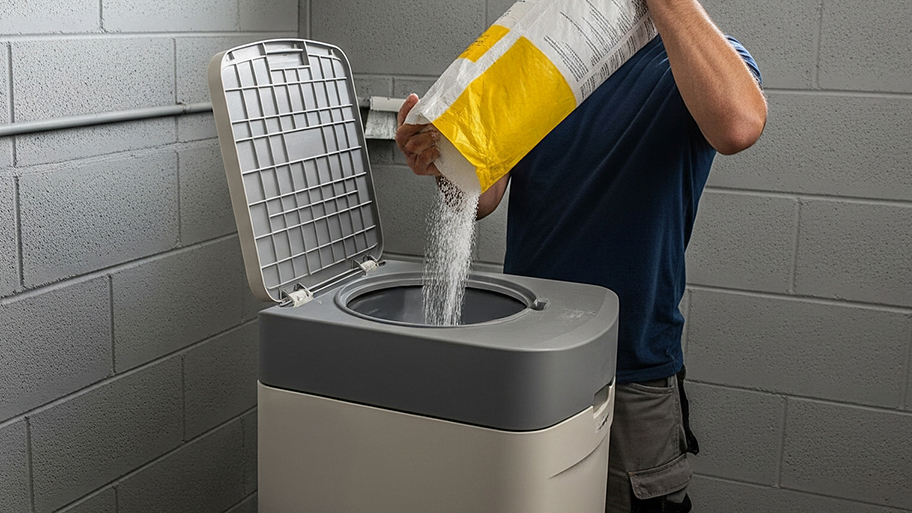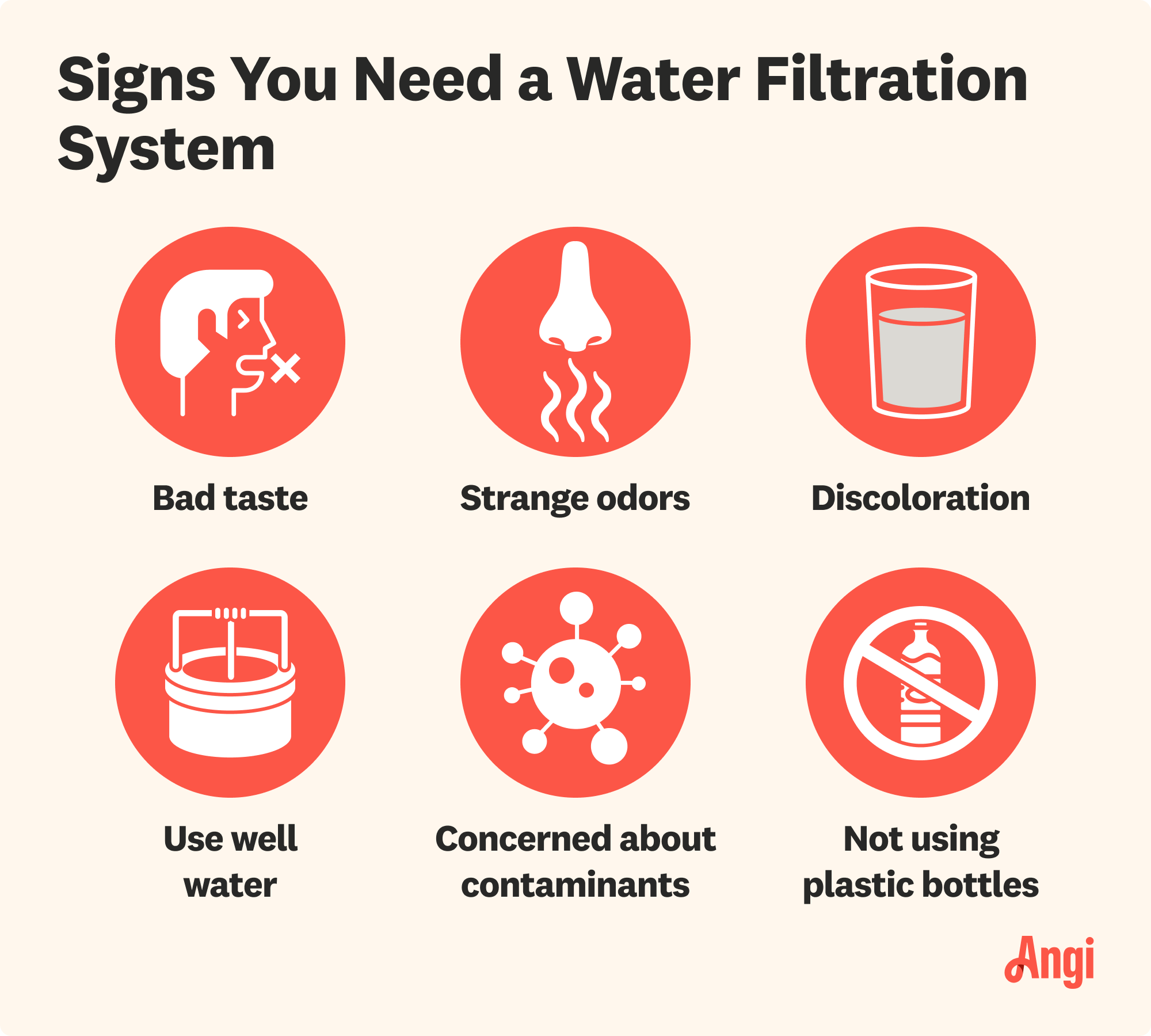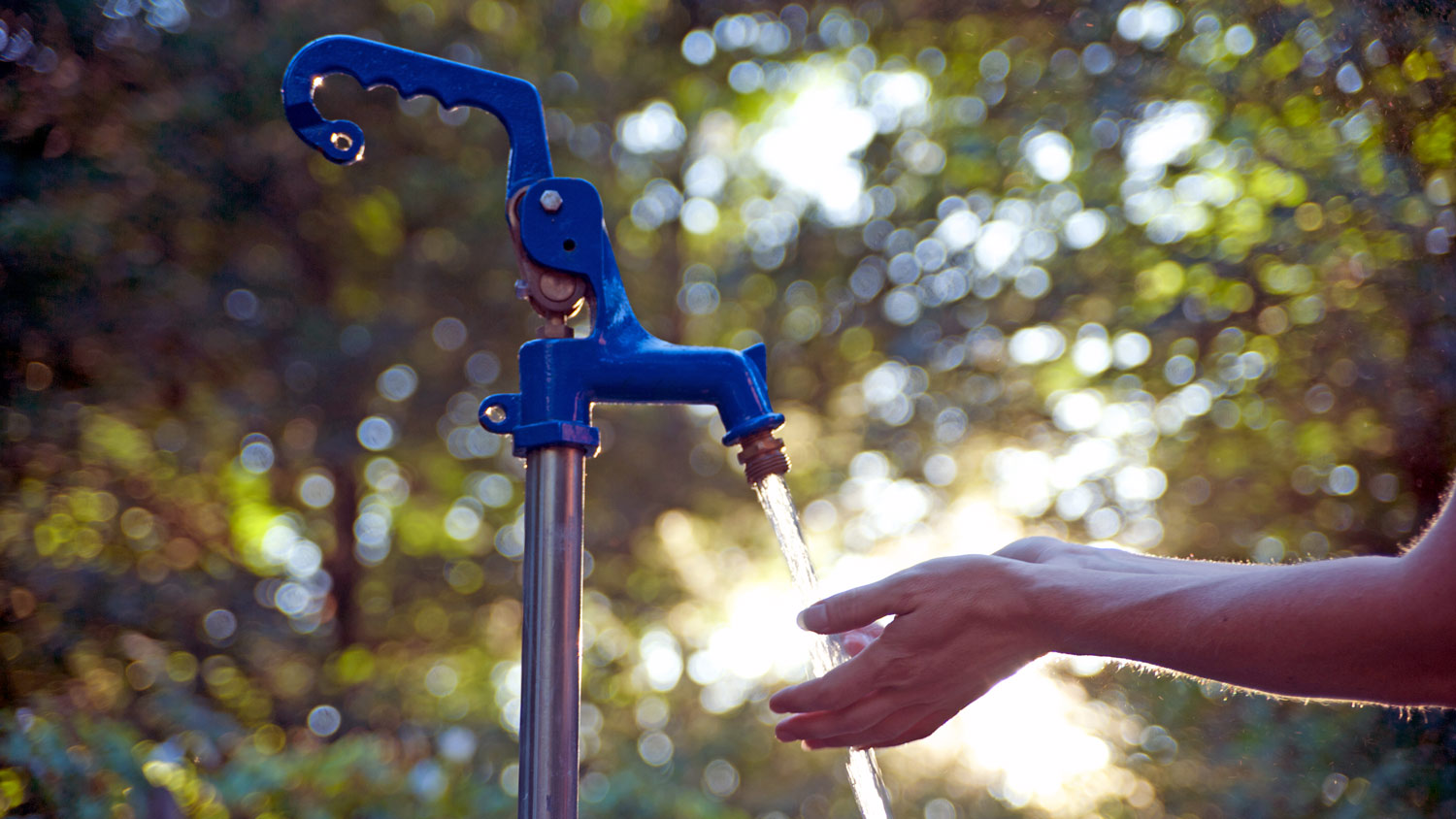
How much a water softener costs depends on your home’s size, and the system’s type and capacity. Our expert guide explores all the price factors.
Clean, crisp water is just a filter away


Hiring a local water filter installer may feel like a big step, but it ensures you choose the right system for your actual water needs—not just masking the problem.
Water quality varies from place to place, and the pros are up to speed on the contaminants it may contain and will recommend the best filter to handle them.
Attaching a water filter to your tap is one of the easier plumbing DIYs for newbies, but it’s still a good idea to hire a pro if your skills are in question.
Hiring a pro to install a water filter costs $1,000 to $4,000, which includes the cost of the unit.
You should feel good about the water flowing through the faucets in your home. Luckily, you have many options when it comes to choosing the right water filter for you. From simple solutions to more complex projects, learn how to filter water so it’s clean, fresh, and tastes great.
Filtered water is water without impurities and contaminants. Water purification in your home offers a couple of key benefits:
Safer for drinking: No filter system eliminates all contaminants, but depending on the filter you choose, it can remove sediment, iron, lead, fluoride, and bacteria. It’s best to talk with a licensed professional plumber to help you choose the right filter based on your water quality (and let you know if you need one at all).
Tastier and clearer: When you filter water, you remove minerals and chlorine, making it look clearer and taste better, in many peoples’ opinions.
The main difference between soft water and hard water is the mineral content. Hard water has higher levels of calcium and magnesium, whereas soft water has undergone a process to remove these minerals.
Water filters cost anywhere from $20 to $4,000, depending on the type of water filter you want.
Point-of-use units cost anywhere from $150 to $1,200, while whole-house filtration systems can range from $1,000 to $4,000, depending on how advanced the system is. A water filter pitcher can cost anywhere from $20 to $100.
Before filtering water, consider what type of contaminants you want to filter out, such as lead or arsenic. Test your water with a home test kit or go through a professional lab to determine your water quality and any issues. Not every home needs a water filter, and if you have specific concerns about your water or are more at risk for waterborne illnesses, talk with your healthcare provider.
If you live in or near a large city, you can also look up the quality of water in your area on the Environmental Working Group database. You can find information on the type of contaminants and the levels that exceed health recommendations. If your area isn’t available on the EWG database, contact your local water utility or environmental group to get info.
Knowing the contaminants that are present in your water can help you determine what type of water filter you want in your home and whether you want it just for your drinking water or the whole home. Some lower-cost, point-of-use options like pitchers and faucet attachments may filter fewer things but might be all you need. Talk with a professional plumber to determine the best option for your home and needs. No matter which filter you choose, ideally, it should be NSF-certified.
Filtering water at home can be as easy as buying a water filter pitcher or as complex as installing a whole-house purification system. Here are the best ways to filter and purify tap water at home.

Water filter pitchers are stand-alone filters that you can keep in your refrigerator or on your countertop. They're often the lowest-cost option, and you can choose the size that works for you and your family.
Fill the pitcher with tap water and let the water sift through the filter before drinking it. For most models, you need to replace the filter every two months or 40 gallons, whatever comes first.
You can attach a water filter directly to your existing faucet. Most models allow you to switch the filter on and off so you only use the filter when you need drinking water. You can usually install this filter for your tap water without any tools.
1. Turn the faucet off. You might want to shut the speedy valve under the sink, too, just to be safe.
2. Remove the aerator from the end of your faucet. Save the gasket for future needs.
3. If you have external threads at the end of your faucet, you likely won't need an adapter to hook up your filter. If the threads are internal, you may need to screw in an adapter (it should come with your filter kit).
4. Attach the filter, turning it clockwise to tighten.
5. Insert the filter cartridge.
6. Turn the water back on at the speedy valve.
7. Turn on your cold water and flush the filter for 10 minutes.
Exchange your existing faucet for a faucet with a filter built inside of it. Many models have an “on” and “off” switch so you only need to use the filter for drinking water.
You should always follow the instructions on your new faucet, but here are the general installation steps:
1. Turn off your water supply at the speedy valve.
2. Release the pressure by turning on the cold water. No water should come out.
3. Disconnect the water supply hose under your sink. Put a bucket underneath the connection first to catch any leftover water.
4. Remove your faucet. There are usually two nuts on the underside of the faucet that connect it to the countertop. Unscrew those, and then lift the faucet out.
5. Put your new faucet in place, attach it to the counter with the new nuts, and hook up the water supply line.
6. Turn back on your water and run the filter for 10 minutes to flush the system.

If you want filtered water on tap, put in a separate faucet for drinking water with an under-the-sink filter unit. The easiest route is to install it into an existing hole in your countertop, such as one for a sprayer or dish soap dispenser. You can mount the filter under the sink and route the filtered water through the faucet.
To install a filtered water faucet, follow these guidelines, but be sure to read the instructions from your manufacturer.
1. Turn off the cold water supply at the speedy valve.
2. Relieve the water pressure by turning on the cold water and letting the excess water drain from your faucet.
3. Identify where you want to install the filter beneath your sink and mark the spot on the wall with a pencil. Aim for a spot that gives you at least 2 to 3 inches of space below so it's easy to remove and replace the filters.
4. Mount the bracket on the wall of your cabinet with screws.
5. Disconnect the water supply line from your faucet. Place a bucket underneath first to catch any water from the hose.
6. Screw on the adapter for the filter hose, often a plastic piece in the shape of a "T." Ensure it's secure.
7. Connect the filter hose to the adapter, ensuring it's secure but not over-tight.
8. Insert the other end of the tubing into your filter. Trim the hose if needed. Cut straight, not at an angle.
9. Connect tubing from the filter to your accessory faucet.
10. Insert the filter cartridge and lock it in place.
11. Double-check all connections.
12. Turn back on your water at the speedy valve and slowly open the faucet to regain pressure.
13. Check for leaks.
14. Run the new faucet for 10 minutes to flush the filter.
Many newer models of refrigerators have water filters built inside. They can be as simple as a single spout for water or offer more options with ice. You'll need to replace your fridge water filter about every six months.
If you don’t already have a water line running to your current fridge, you can have a local plumber come in to install one.
A whole-house water filter system, or a point-of-entry filter, purifies the water at the main entry point into your home. All your water is filtered, including the water to your shower and appliances. If your water is hard, has many contaminants, or has a strong odor, a whole-house system might be your best route. You can choose from a range of filter systems, including carbon-based filters and reverse-osmosis.
Installing a whole-house filtration system is best left to a local professional plumber. The project involves draining your water system, cutting pipes, connecting fittings, and even soldering. A plumber also ensures the system is tight and that there are no leaks. Attempting a DIY can be complex and cause possible water damage to your home if something goes awry. You could end up spending more in the long run.
If you’re in the middle of a water shutoff or power outage, or are experiencing a lack of water after a natural disaster, a handheld filter or natural filter can get you by. But before filtering and purifying unknown water, be sure to do your research to ensure you’re safely purifying any water you’re drinking. The risk of waterborne illness outdoors is far greater than sipping some cloudy water at home.
You’ll typically want to combine two methods of water filtration when outdoors or during a water shutdown, such as using a DIY filter to catch debris, then boiling the water, or using UV treatment to remove pathogens.
Here are a few options:
Ultraviolet filter: Kills microorganisms to prevent viral and bacterial infections.
Pump filter: Purifies water by pushing water through a filter.
Bottle, straw, or squeeze filters: Processes small amounts of drinking water.
Boiling water: Removes pathogens after 60 seconds.
Chemical treatments: Purifies water through iodine- or chlorine-based drops.
Sifting water: Removes particles by filtering water naturally through a bandana or coffee filter.
Tablets and droplets: These combat diseases commonly found in unsafe water, like giardia lamblia and parasites. Dissolve the tablets, seal the container, and let it sit for at least 30 minutes before drinking.
Charcoal: Use activated charcoal in powdered form, not the kind treated with chemicals like barbecue briquettes. Rinse the charcoal with water, then dry it by spreading it on paper. Once dry, place it in a coffee filter or tight-woven dish towel to pour the water through.


Having filtered water at home can improve your health and make your water taste better. Here are a few pointers for filtering water at home:
Choose a point-of-use filter system to reduce your costs, such as a faucet attachment or a refrigerator with a water filter.
Opt for whole-house filtration if you have excess contaminants in your water, your water is hard, or it has a foul odor.
Focus on your water purification goals, such as filtered drinking water versus water that goes to your bathtub.
Replace the filter in your fridge, faucet, or water pitcher regularly or if you see black flecks in the water. These small bits of charcoal aren’t harmful, but they’re a sign that your filter needs to be replaced.
Hire a plumber to install a whole-house filtration system or an under-the-sink unit to ensure the hookup is done properly.

You can install a water filter yourself if it’s an attachment for your faucet or an under-the-sink unit. These filters are relatively easy to install and require few tools. If you follow your manufacturer's installation instructions, there’s little chance of a major issue happening.
It’s best to hire a plumber or a water softener installer near you for a whole-house filtration system, as it involves draining your water system, cutting pipe, and soldering. Installation, including the cost of the unit, ranges from $1,000 to $4,000 depending on the type of system and the cost of labor in your area. On average, the cost of a plumber ranges from $45 to $200 per hour.
From average costs to expert advice, get all the answers you need to get your job done.

How much a water softener costs depends on your home’s size, and the system’s type and capacity. Our expert guide explores all the price factors.

Wondering about water treatment system costs? Learn average prices, key cost factors, and ways to save on installation and maintenance for your home.

Discover how much well water treatment systems cost, including installation, maintenance, and tips to save. Get expert insights to plan your water system project.

Considering reverse osmosis versus carbon water filtration for your home? Carbon filters can remove some impurities, but RO removes a lot more.

Learn about what happens if you have too much iron in your water to determine if you should consider testing your water, filtering your water, or changing your water source.

From activated carbon to reverse osmosis, there are many types of water filters on the market today. Here are 10 of the most popular options.